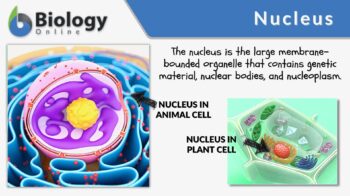
Nucleus
n., plural: nuclei
[ˈnjuː.kli.əs]
Definition: a large organelle in eukaryotic cells that contain genetic material
Table of Contents
In cell biology, the nucleus is the large, membrane-bounded organelle that contains the genetic material in the form of multiple linear DNA molecules organized into structures called chromosomes. In cell biology, the nucleus function is to act as the control center of the cell. This is because it contains the genetic material that codes for the vital functions of the cell.
The nucleus is the organelle responsible for maintaining the integrity of DNA and for controlling cellular activities such as metabolism, growth, and reproduction by regulating gene expression. The nucleus is the largest cytoplasmic structure in animal cells. In mammalian cells, the average diameter is 6 µm.
There are cells though that are lacking in nuclei — human red blood cells. There are also certain cells that contain relatively more nuclei, e.g. osteoclasts.
What is the role of nucleus in protein synthesis? Is it where proteins are made? Find the answers here: Where Does Protein Synthesis Take Place? Come and join us in our Forum!
Nucleus Definition
In biology, the term nucleus usually refers to the cell nucleus, which is defined as the organelle inside the cell containing the chromosomes. Not all cells though have a nucleus. When a cell lacks a nucleus the cell is described as anucleated. Apart from this definition, the nucleus is also used in other biological fields. For instance, in botany, the nucleus may also refer to the central kernel of a nut or seed or the center of a starch granule. In neuroanatomy, a nucleus is a group of cell bodies of nerve cells in the brain or spinal cord.
In other scientific fields, the term nucleus may refer to the core or the central part around which other parts are grouped or gathered. For instance, in Physics, a nucleus refers to the positively charged center of an atom that usually contains protons and neutrons. In Chemistry, a nucleus is a fundamental arrangement of atoms that occur in compounds through the substitution of atoms without a change in structure.
In Astronomy, a nucleus is the center of the head of a comet or the central or brightest part of a nebula or galaxy. In Meteorology, a nucleus is a particle on which water vapor molecules accumulate in free air to form water drops or ice crystals.
Biology definition:
A nucleus is a large double-membraned organelle that is sometimes referred to as the “central unit” of the cell because it contains the chromosomes that bear the genetic material. It is not found only in eukaryotic cells and not in prokaryotic cells. Apart from the chromosomes, there are other structures inside the nucleus and they are collectively called nuclear bodies. The fluid component of the nucleus is called the nucleoplasm.
Etymology: The term nucleus came from the Latin nucleus, meaning “kernel” or “core”, a diminutive of nux (“nut”). The plural form is nuclei. Nuclear is the descriptive term that relates to a nucleus.
Compare: nucleoid
Nucleus vs. Nucleoid
The nucleus is absent in prokaryotes and the lack of this organelle is used as a basis to distinguish whether a cell is a prokaryote or a eukaryote. Only eukaryotes have a nucleus; prokaryotes lack a nucleus. However, prokaryotes have a region in their cell where the genetic material is located. This region is called a nucleoid. It is nucleus-like and not bound by a nuclear envelope that separates the genetic material from the cytoplasm.
Nucleus vs. Nucleolus
The nucleus should not be confused with another cytoplasmic structure, the nucleolus. Both of them are present in eukaryotic cells. However, they differ in structure and function. The nucleus is a double-membraned organelle whereas a nucleolus is a round granular structure and not membrane-bound. Nevertheless, the nucleolus is found inside the nucleus. Thus, the nucleolus is one of the nuclear components and is sometimes classified as one of the nuclear bodies.
Apart from the nucleolus, the other components of the nucleus are chromatins (chromosomes), nuclear bodies (e.g. Cajal bodies and gems (Gemini of Cajal bodies), polymorphic interphase karyosomal association (PIKA) domains, promyelocytic leukemia protein (PML) bodies, splicing speckles, paraspeckles, perichromatin fibrils, and clastosomes), nuclear membrane, and nucleoplasm.
The nucleolus, in turn, is composed of proteins, DNA, and RNA. While the nucleus is largely involved in gene regulatory functions, the nucleolus functions primarily for the creation of ribosomes essential for protein synthesis. In higher eukaryotes, the nucleolus is comprised of a fibrillary center involved in the transcription of the rDNA, the dense fibrillary component that contains the fibrillarin protein associated with rRNA processing, and the granular component that contains the nucleophosmin protein for ribosome biogenesis. (1)
Parts and Function of the Nucleus
The nucleus structure is a double-membraned organelle of the eukaryotes. It has three main components: nucleolus and other chromatins (chromosomes), nuclear bodies, nuclear matrix, nucleoplasm, and nuclear envelope.
Chromatin/chromosomes
A complex of nucleic acids (e.g. DNA or RNA) and proteins (e.g. histones) is called chromatin. During cell division, the chromatin condenses to become a chromosome. The basic structural unit of chromatin is a nucleosome. Each nucleosome is made up of a DNA segment wound around the histone protein cores. The main function of chromatin is to package DNA into a smaller volume to fit into the cell. There are two major forms of chromatin: the euchromatin and the heterochromatin. The euchromatin is structurally loose to allow transcription and replication whereas the heterochromatin is more condensed and therefore less active.
Nuclear DNA
The nuclear DNA comprises a large fraction of the cell’s genome (the small fraction comes from the extranuclear DNA in the mitochondria and/or chloroplasts). The DNA outside the nucleus is called extranuclear DNA. This extranuclear DNA, such as cpDNA in chloroplasts and mtDNA in mitochondria, occurs in multiple copies since there are several chloroplasts and mitochondria while there is usually just one nucleus inside a cell. A cell would, therefore, contain several copies of mtDNA and cpDNA, often in thousands. Nuclear DNAs are compacted into chromatin structures through histones whereas mtDNA and cpDNA are not.
Nuclear bodies
A nuclear body is defined as a non-membraned mostly proteinaceous structure in the nucleus. As already mentioned above, the nucleolus is regarded as one of the nuclear bodies and is most prominent. It is characterized by its round granular appearance. Its function is largely for the synthesis of ribosomes, which in turn are one of the key players in protein synthesis.
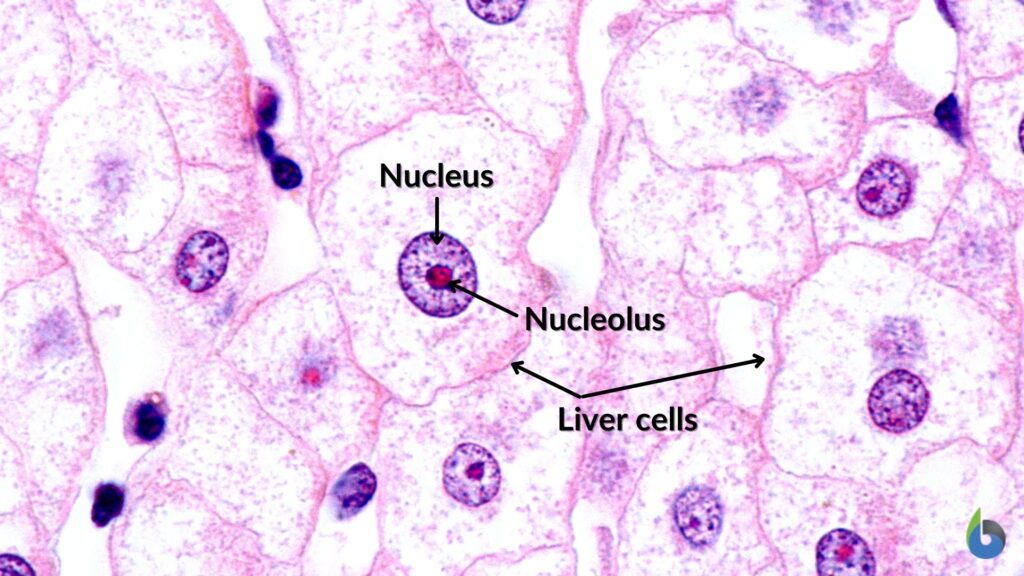
Other nuclear bodies are Cajal bodies and gems (Gemini of Cajal bodies), polymorphic interphase karyosomal association (PIKA) domains, promyelocytic leukemia protein (PML) bodies, splicing speckles, paraspeckles, perichromatin fibrils, and clastosomes. Nuclear bodies may be classified into simple (type I and type II) and complex (type III, type IVa, and type V).
Nuclear matrix
The nuclear matrix is analogous to the cytoskeleton in the cytoplasm of the cell. It is a fibrillar network that provides structural support to the size and shape of the nucleus. The nuclear matrix is more dynamic though compared with the cytoskeleton. It includes the nuclear lamina. The latter refers to the dense fibrous network juxtaposing the nuclear envelope.
Nucleoplasm
The nucleoplasm refers to the protoplasm of the nucleus just as the cytoplasm in the rest of the cell. The nucleoplasm is comprised of various materials (e.g. chromosomes, nuclear bodies, and nuclear matrix) contained by the nuclear envelope. The fluid component of the nucleoplasm is called a nucleosol (just as the cytosol is to the cytoplasm).
Nuclear envelope
The nuclear envelope (also called a nuclear membrane) is the biological membrane that surrounds the nucleus. Similar to a cell membrane, the nuclear membrane is a bilipid layer. Thus, the nuclear membrane function is similar to a cell membrane as well in terms of regulating the entry and exit of materials. The nuclear envelope has nuclear pores to control the movement of molecules between the nucleoplasm and the cytoplasm. It is impermeable to large molecules. Thus, it separates the contents of the nucleus from the cellular cytoplasm and allows the entry of selected molecules. The nuclear transport of large molecules (e.g. proteins and RNAs) occurs via an active transport system carrier proteins while the passage of small molecules and ions occurs passively via the nuclear pores.
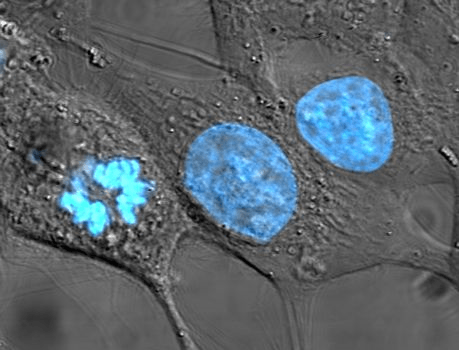 | 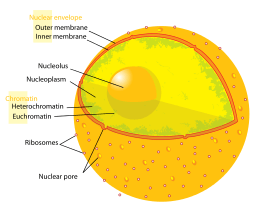 |
| Picture of the nucleus. In this photo of HeLa cells, the nuclei are shown with a Hoechst 33258 stain. | Anatomy of the nucleus. The different parts of the cell nucleus are shown. |
Lobes
The nucleus may be described as bi-lobed, tri-lobed, or multi-lobed depending on the number of lobes. The white blood cell is an example of a cell with a lobed nucleus.
Function
The nucleus is called the control center of the cell. This is because it is responsible for maintaining the integrity of DNA. A large fraction of the genome comes from nuclear DNA. Thus, the nucleus controls much of the cell’s activities such as metabolism, growth, and reproduction. It does so by regulating gene expression. It also mediates the replication of DNA during the S phase of the cell cycle.
Nucleus may not be the site of protein synthesis but plays a very crucial role. Find out how: Where Does Protein Synthesis Take Place? Join us in our Forum!
Common Biological Reactions In The Nucleus
Here are some of the common reactions or biological processes occurring in the nucleus:
- Gene expression
- DNA replication
Gene expression
Gene expression is the conversion of the information from the gene into mRNA via transcription, and then to protein via translation resulting in the phenotypic manifestation of the gene. Transcription (the first step of gene expression) in eukaryotes occurs in the nucleus (in prokaryotes, in the cytoplasm). It is the process of creating a copy of DNA into mRNA through the help of the enzyme RNA polymerase.
Although RNA polymerase traverses the DNA template strand from 3′ → 5′, the coding (non-template) strand is usually used as the reference point. Hence, the process proceeds in the 5′ → 3′ direction, like in DNA replication. However, unlike DNA replication, transcription does not need a primer to start and it uses base pairing to create an RNA copy containing uracil instead of thymine.
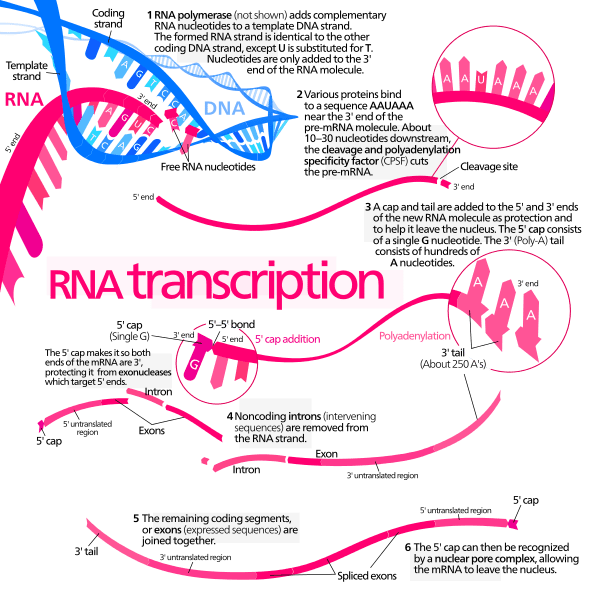
The second step is translation wherein a strand of mRNA is decoded to produce a particular sequence of amino acids. Although this step occurs in the cytoplasm, regulators of the process are produced from the nucleus. For example, rRNAs and tRNAs are produced via transcription only (and thus skipping the translation step) of non-protein coding genes.
The rRNAs and tRNAs are important mediators of the translation of the mRNA. Prior to the translation of mRNA though, the newly-synthesized mRNA (called pre-mRNA) undergoes post-translational modification, which occurs in the nucleus. These modifications include 5′ capping, 3′ polyadenylation, and RNA splicing. mRNAs that are moved to the cytoplasm from the nucleus without undergoing modifications would be degraded instead of being translated.
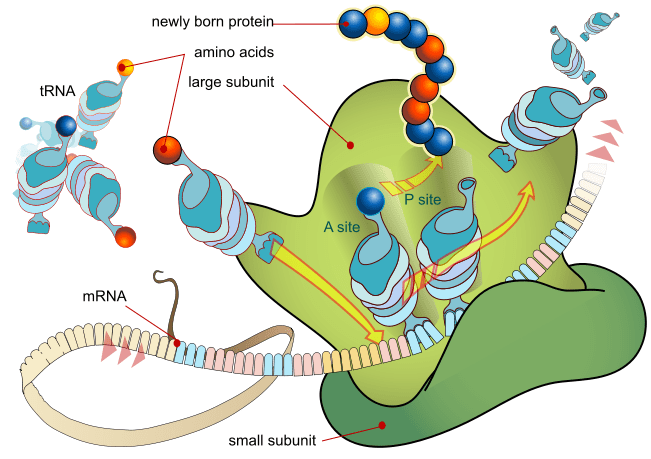
DNA replication
DNA replication is the process of copying and duplicating a DNA molecule in a semiconservative way. The copy contains one of the original strands paired with a newly synthesized strand that is complementary in terms of AT and GC base pairing. This occurs particularly during the S phase of the cell cycle. This is essential as it is a preparatory step prior to cell division (i.e. mitosis or meiosis I).
Biological Importance of Nucleus
The nucleus is the largest cytoplasmic structure in animal cells. In mammalian cells, the average diameter is 6 µm. While there are cells lacking in nuclei, such as human red blood cells, there are also certain cells that have relatively more nuclei, e.g. osteoclasts. This implies that the osteoclasts are greatly more active in terms of gene regulation than the red blood cells. Upon maturity, the red blood cells lose their nucleus to provide greater affinity for gases, e.g. oxygen.
Proteins are made where ribosomes are. But how about ribosomes? Where are they produced? Get the answer here: Where Does Protein Synthesis Take Place? Join our Forum!
NOTE IT!
How the Eukaryotic Cells Got Their Nucleus
You’ve probably heard about the Endosymbiotic theory, which proposes the origin of organelles, especially mitochondria and chloroplasts, in eukaryotic cells via early endosymbiotic events. It theorizes that during the primitive period, a larger cell (host cell) took in the smaller cell (endosymbiont), which gradually became a permanent resident. The larger cell transitioned to be the eukaryote and the smaller cell into cellular components. Did the endosymbiont prokaryote transition into a nucleus?
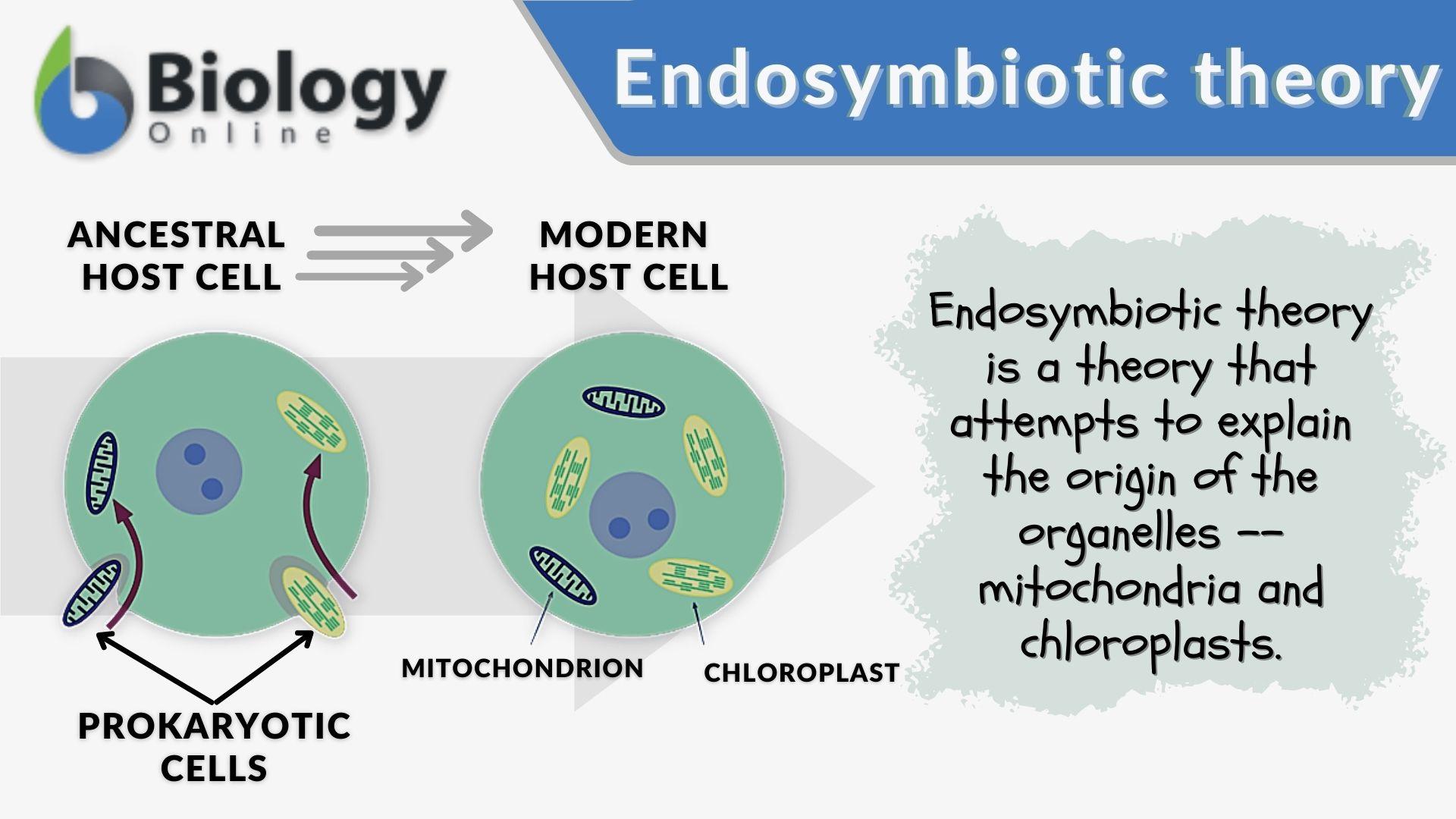
The evolution of the nucleus is attributed to a series of events in which the endosymbiotic events are presumed to have a key role albeit indirectly. In particular, the “primitive prokaryote” appeared to have turned into a mitochondrion — not into a nucleus. This primitive energy maker could have powered up various cellular processes of the host cell, including those processes that led to the evolution of the nucleus.
The first step is likely the formation of the nuclear envelope from the cell membrane, which could have folded within the cell and ‘enveloped’ the genetic material. This primitive nuclear envelope separated the genetic material from the cytoplasm. This might have been crucial so as to allow the genetic material to undergo changes, and become more complex and organized. For instance, the evolution of histone proteins helped in compacting DNA and regulating genetic expression. The nucleolus formed where ribosomal RNA genes are concentrated.
Subsequently, an endomembrane system emerged, compartmentalizing cellular activities in specialized regions. The nuclear envelope expanded and took part of the endoplasmic reticulum.
Take the quiz below to check what you have learned so far about nuclei.
References
- Koberna, K., Malínský, J., Pliss, A., Mašata, M., Večeřová, J., Fialová, M., Bednár, J., and Raška, I. (2002). “Ribosomal genes in focus: new transcripts label the dense fibrillar components and form clusters indicative of “Christmas trees” in situ”. J. Cell Biol. 157 (5): 743–8.
- BIOdotEDU. (2019). Retrieved from Cuny.edu website: http://www.brooklyn.cuny.edu/bc/ahp/LAD/C3/C3_elecEnergy.html
- Molecular Expressions Cell Biology: The Cell Nucleus. (2019). Retrieved from Fsu.edu website: https://micro.magnet.fsu.edu/cells/nucleus/nucleus.html
- Cell Nucleus – CellBiology. (2017). Retrieved from Unsw.edu.au website: https://cellbiology.med.unsw.edu.au/cellbiology/index.php/Cell_Nucleus
- Cell Nucleus and Nuclear Envelope. (2019). Retrieved from Gsu.edu website: http://hyperphysics.phy-astr.gsu.edu/hbase/Biology/celnuc.html
- Gorski, S. (2005). Systems biology in the cell nucleus. Journal of Cell Science, 118(18), 4083–4092. https://doi.org/10.1242/jcs.02596
- DUNDR, M., & MISTELI, T. (2001). Functional architecture in the cell nucleus. Biochemical Journal, 356(2), 297. https://doi.org/10.1042/0264-6021:3560297
- CELL AND ORGANELLE NOTES. (2019). Retrieved November 14, 2019, from Edu.pe.ca website: http://www.edu.pe.ca/gray/class_pages/rcfleming/cells/notes.htm
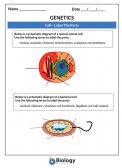 CELL – LABEL THE PARTS (pdf) | CELL – LABEL THE PARTS This worksheet is useful in helping the students assess their familiarity with the different parts of the cell, both the eukaryotic and the prokaryotic types. This is useful in genetics as it helps gauge the student’s knowledge of the difference between the two cell types, especially in terms of the location of the genetic material. Subjects: Genetics & Evolution, Cell Biology |
© Biology Online. Content provided and moderated by Biology Online Editors









